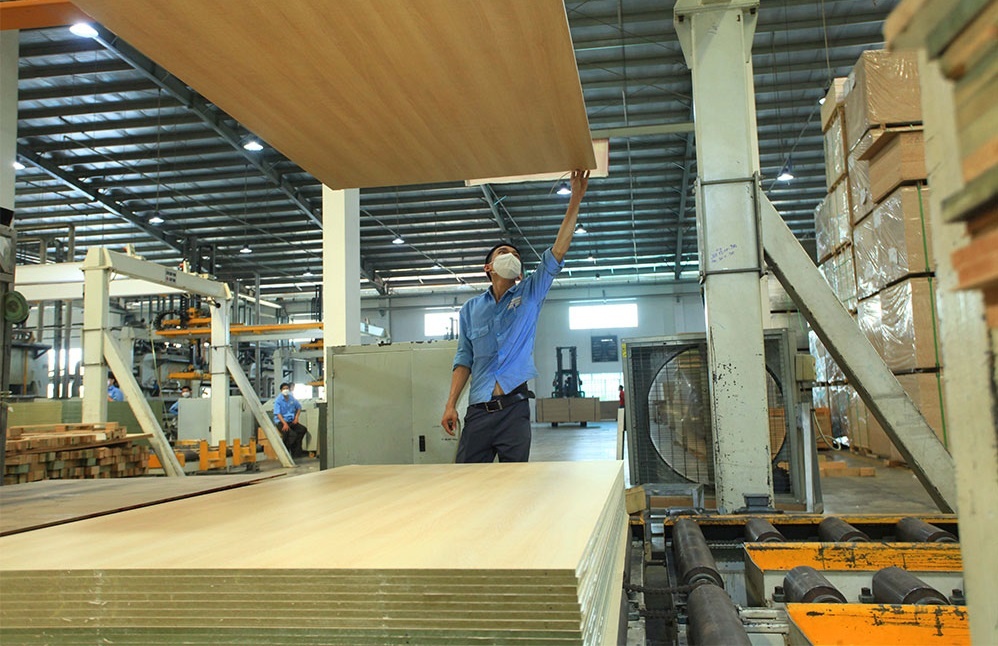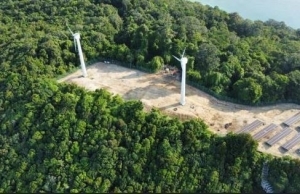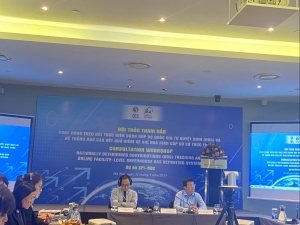Apprehension apparent over fresh CBAM regulations
Industrial manufacturers and Vietnamese analysts have reacted to upcoming EU rules on greenhouse gas (GHG) emissions reporting with both support and concern, with some believing that Vietnamese businesses currently lack the technical know-how required for ecosystem conservation, restoration, and sustainable forest management, not to mention the obstacles involved in shifting land use from agriculture to conservation and ecological restoration.
 |
| Apprehension apparent over fresh CBAM regulations, illustration photo/ Photo Le Toan |
On May 10, co-legislators signed the Carbon Border Adjustment Mechanism (CBAM) regulations. The adoption of GHG emissions reporting regulations by the European Parliament (EP), to take effect as of October 1, is the first stage in implementing its climate plan via the CBAM. The EP has adopted an array of measures to reform the market in order to reduce the European Union’s GHG emissions by 62 per cent by 2030 compared to 2005 levels.
Dr. Ha Huy Tuan of Chu Van An University said that CBAM conditions are a protective technical measure for the EU business community. “The mechanism creates opportunities for many enterprises to sell carbon credits, the largest of which are in the fields of afforestation and sustainable rice production,” he added.
The EP has also backed a plan to progressively impose import taxes on carbon-intensive products beginning in 2026. Cement, iron and steel, aluminium, fertiliser, electricity, and hydrogen gas are the commodity divisions that fall under CBAM’s control.
In Vietnam, the Ministry of Natural Resources and Environment (MoNRE) reported that accumulatively as of last November, enterprises consumed four million carbon credits, with a total value of nearly $638 million.
Vietnam has pledged to implement emission reduction measures to mitigate the negative effects of climate change. According to the MoNRE, Vietnam has over 275 projects under the clean development mechanism with 29.4 million carbon credits as of November 2022; 32 gold-standard projects issuing more than 5.7 million carbon credits internationally; and 27 verified standard projects issuing more than 1.3 million carbon credits.
Vietnam is also currently finalising carbon market regulations to achieve net-zero emissions by 2050. According to survey results from the Ministry of Industry and Trade (MoIT) and the MoNRE, steel production and solid refuse treatment, two fields that can be exploited swiftly, generate revenue for the carbon credit trading market.
More than 300 small- and medium-sized enterprises in Vietnam produce iron and steel, sustaining a high growth rate of approximately 18 per cent per year for production raw materials and 20 per cent for consumption. However, the steel industry’s emissions are growing due to its rapid development and lack of control in production technology, while the majority of steel factories rely on fossil fuels or electricity.
The results of a survey conducted by the MoIT’s Department of Energy Efficiency and Sustainable Development in 2022 indicated that factories in Vietnam emit approximately 21 million tonnes of CO2 when producing 10 million tonnes of steel on average. It estimates that by 2025, total steel industry emissions will amount to 122.5 million tonnes of CO2 and will increase to 133 million tonnes by 2030, representing 17 per cent of Vietnam’s total emissions.
In the meantime, domestic solid waste treatment remains a significant impediment. According to the MoNRE report, the average quantity of solid waste generated annually in Vietnam is approximately 12 million tonnes. As much as 90 per cent of total solid waste must be treated using landfill technology.
The Vietnamese government intends to establish, organise, and pilot a carbon exchange between 2025 and 2027, laying the groundwork for the exchange’s establishment and operation before 2030.
Dr. To Xuan Phuc, programme director of Forest Trend’s Trade Policy and Resource Management programme, stated that voluntary carbon market instruments are almost entirely absent from developing markets at the current time.
“A carbon tax is used to limit production activities with high emissions. However, Vietnam must strike a balance between economic development and emissions, as well as implement a carbon tax tool in accordance with the road map,” he said.
According to Phuc, in many developing nations, the use of this instrument to limit economic activities by reducing emissions is still controversial. “The EU will undoubtedly broaden the list of goods to be controlled, which indicates that the CBAM’s influence on Vietnamese businesses will grow in the future,” he noted.
Currently, the mandatory carbon market is valued at $899 billion, whereas the voluntary carbon market is valued at only $2 billion, but expanding significantly. The latter grew by 26 per cent in 2022, spurred by a 20 per cent rise in the price of carbon credits relative to 2021.
| Vietnam began implementing emission reductions in accordance with the Paris Agreement on climate change in 2021. The country aims to reduce total GHG emissions by 9 per cent, or 83.9 million tonnes of CO2, compared to the development scenario. With international support, the slightly diminished contribution will increase to 27 per cent, or 250.8 million tonnes of CO2, from its current level. |
 | ASEAN looks towards net zero emissions The Asian Development Bank (ADB) and ASEAN Catalytic Green Finance Facility jointly held the Southeast Asia Development Symposium themed “Imagining a net-zero ASEAN” in Indonesia’s Bali on March 30. |
 | Vietnam operates greenhouse gas reporting system online A reporting system for facilities to upload their greenhouse gas (GHG) emissions data online has been completed, and will be updated when the Ministry of Industry and Trade, the Ministry of Construction, and the Ministry of Transport issue detailed guidance for their respective areas, according to a recent consultation meeting. |
What the stars mean:
★ Poor ★ ★ Promising ★★★ Good ★★★★ Very good ★★★★★ Exceptional
Related Contents
Latest News
More News
- Heavy industries set for pilot greenhouse gas quotas (December 25, 2025 | 10:00)
- Swedfund invests in MSME growth and climate action in Vietnam (December 19, 2025 | 11:42)
- GreenYellow brings solar energy to light up remote schools in Tuyen Quang province (December 19, 2025 | 08:00)
- Charge+, Grab partner to develop EV charging network in Vietnam (December 18, 2025 | 17:11)
- Linking sci-tech and innovation to Vietnam’s net-zero future (December 18, 2025 | 14:31)
- Driving double-digit growth through green and circular transformation in Vietnam (December 17, 2025 | 09:00)
- Standard Chartered and ACCA deepen collaboration to develop Vietnam’s talent for a sustainable future (December 15, 2025 | 18:18)
- Schaeffler reports strong early output from Dong Nai solar project (December 12, 2025 | 15:16)
- Forestry conference highlights biodiversity and sustainability goals (December 09, 2025 | 13:35)
- Home Credit honoured among top 10 sustainable companies in trade and services (December 09, 2025 | 12:18)

 Tag:
Tag:



















 Mobile Version
Mobile Version